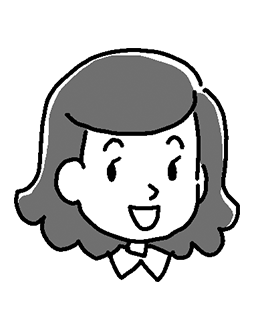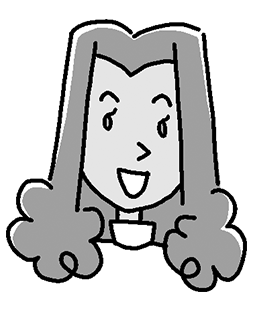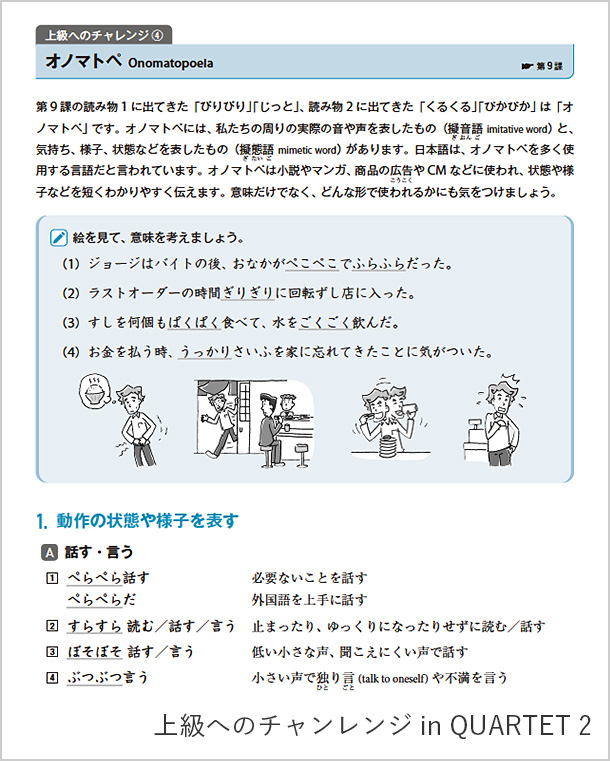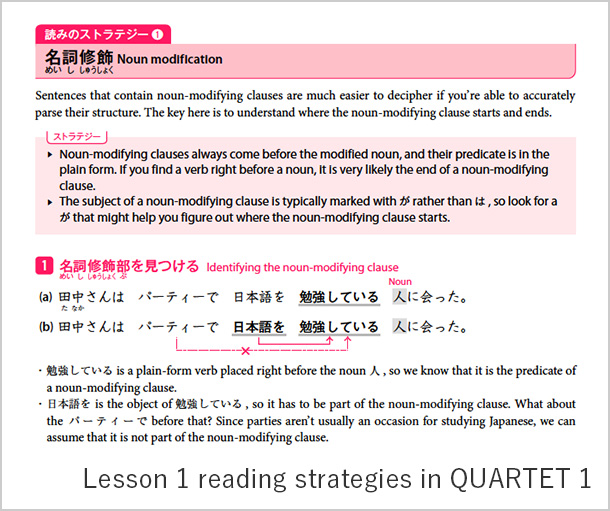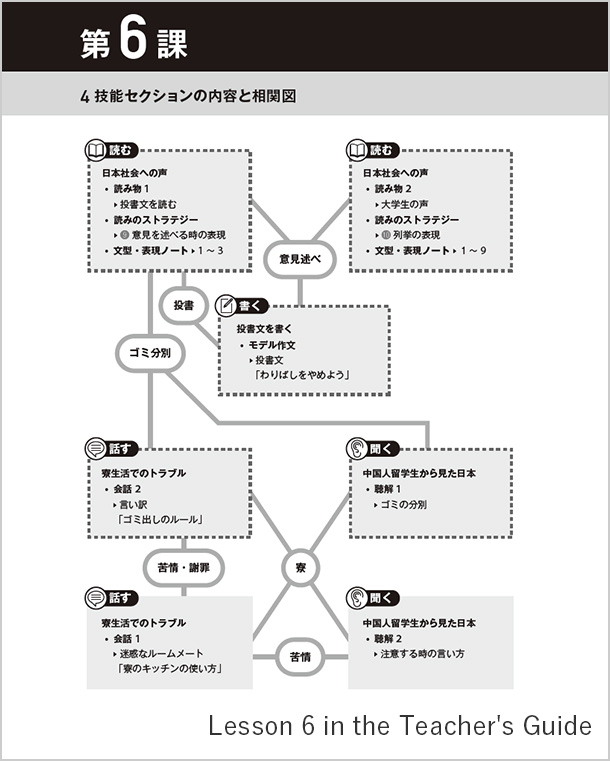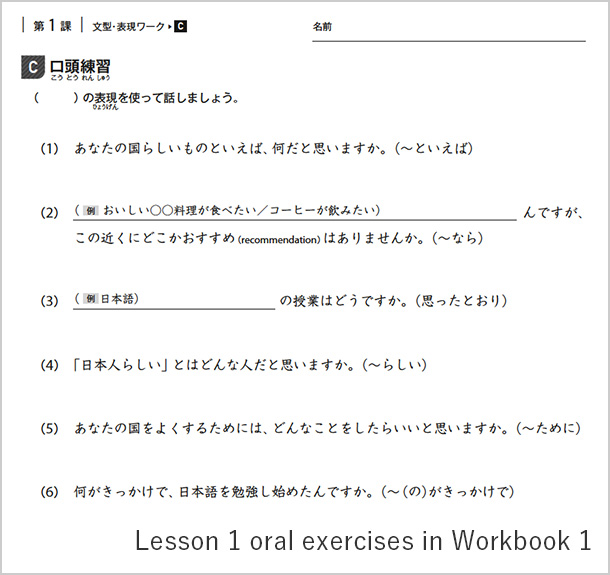Targeted Learners
 Who is QUARTET designed for?
Who is QUARTET designed for?

QUARTET is divided into two volumes. QUARTET 1 is designed for learners who have completed the beginning level (250–300 hours of study), while QUARTET 2 serves those who have finished the early stage of intermediate studies (350–400 hours, including beginning studies).
 Can QUARTET be used for self-study?
Can QUARTET be used for self-study?

Since QUARTET uses English to explain grammar points and reading strategies, and provides English translations of vocabulary terms, English speakers should be able to use it for self-study. Its effectiveness as a self-study resource is enhanced when used in conjunction with the workbook (containing questions of the content of readings, and exercises for the grammatical patterns and expressions) and the exclusive apps for vocabulary and kanji practice.
